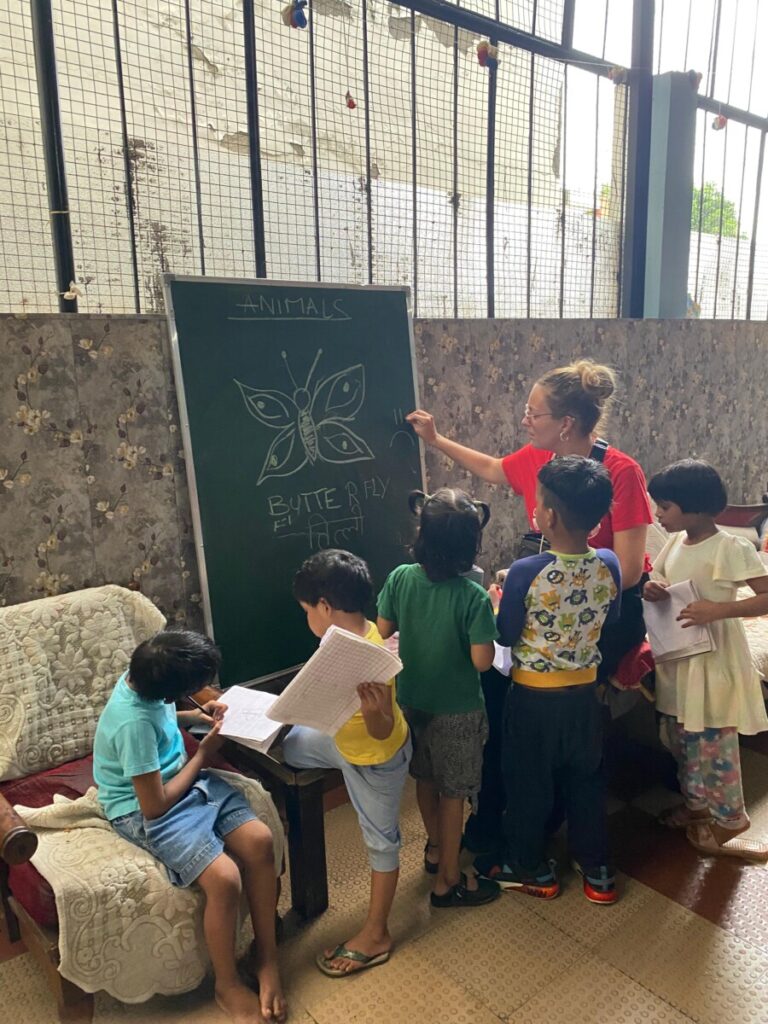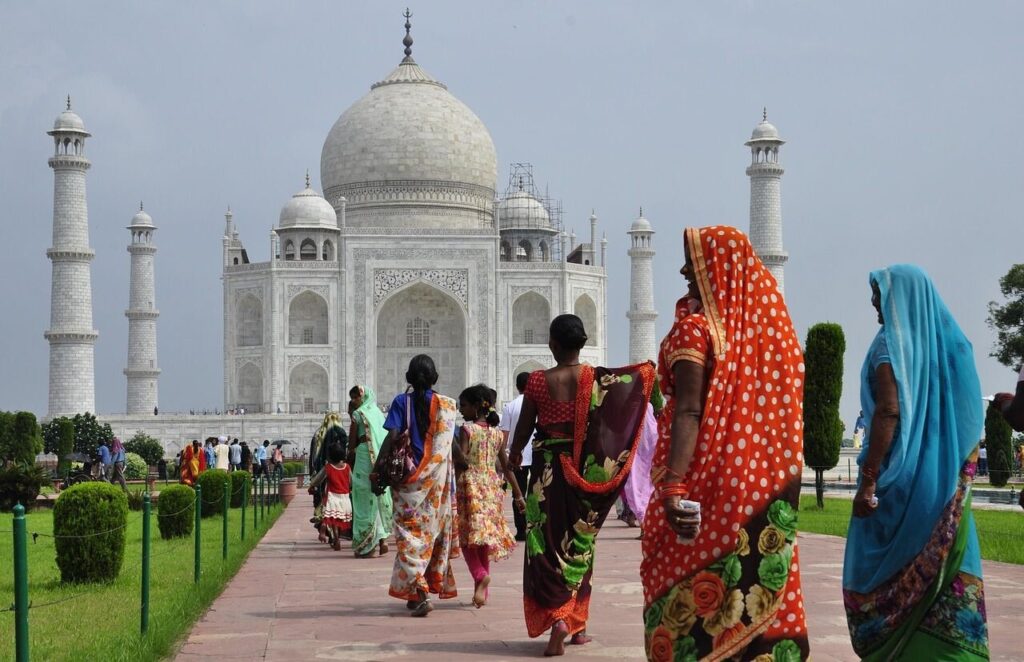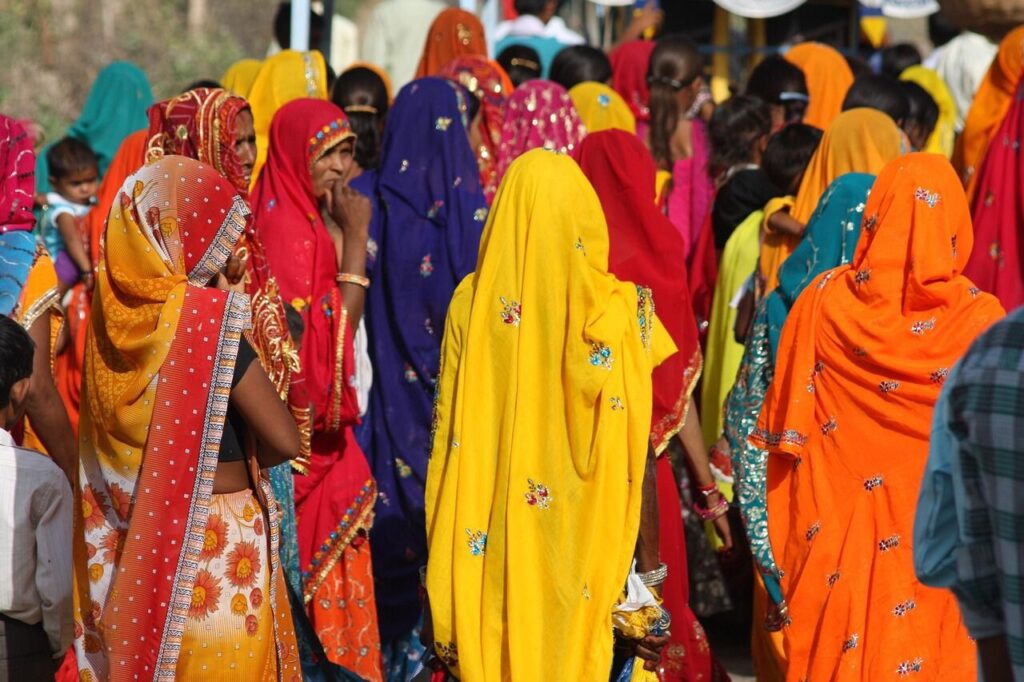India, the seventh-largest and most populous country in the world, is one of the most culturally and geographically diverse nations. It is home to four major religions: Hinduism, Buddhism, Jainism, and Sikhism.
Indian culture is a rich blend of religious, artistic, and culinary traditions, influenced by various invasions and dominations throughout history, which is reflected in all aspects.
At Cooperating Volunteers, India is a destination chosen throughout the year by many people to experience international volunteering. Since many of our programs are directly related to education, today we want to talk to you about how it works in this country.

Education in India is a complex and diverse system, influenced by its vast size, cultural diversity, and socio-economic challenges.
It follows a structured level system:
– Preschool Education
This stage is not mandatory but is fundamental in the early development of children. It focuses on preparing them for primary school through games, interactive activities, and basic teaching in reading, writing, and mathematics.
It is divided into two main levels: Pre-Nursery or Daycare for children aged 2 to 3 years and Nursery, LKG (Lower Kindergarten), and UKG (Upper Kindergarten), which goes from ages 3 to 6.
After UKG, children enter primary school.
There are different preschool institutions.
On one hand, private schools dominate the sector and offer structured programs based on methodologies like Montessori, Waldorf, and Reggio Emilia. On the other hand, Anganwadis (Childcare Centers) are part of the government’s Integrated Child Development Services (ICDS) program, providing basic education, nutrition, and health services to children from rural and marginalized communities. Lastly, there are International and Alternative Schools, some following global curricula such as IB (International Baccalaureate) or alternative learning methodologies.
As mentioned earlier, learning is encouraged through storytelling, songs, art, and interactive activities. Teaching is conducted in English or regional languages, depending on the school. Government programs provide meals and medical check-ups in rural areas, and social and motor skills are developed to improve communication and physical coordination.
– Primary Education
Primary education in India is a fundamental stage within the educational system and is mandatory and free for children aged 6 to 10 years under the Right to Education Act (RTE) of 2009.
During this period, five years of schooling are covered: grades 1 to 5, which include ages 6 to 10 years, after which students enter lower secondary education.
There are also different types of schools chosen based on each family’s economic level. On one hand, public schools are administered by the central or state government, where education is free, and books and meals are provided through the Mid-Day Meal Scheme. However, the quality of education varies, especially in rural areas. On the other hand, private schools offer higher-quality education with better facilities and follow state or national curricula (CBSE, ICSE), but the cost is usually high. Lastly, there are also International and Alternative Schools, as mentioned earlier.
During this phase, subjects such as English, Hindi or regional languages, mathematics, basic sciences, social studies (history and geography), and arts and physical education are taught.
Many schools follow traditional learning methods, emphasizing exams based on memorization. Language instruction is emphasized, and in cities, digital tools have been integrated to enhance learning. Continuous evaluations are implemented under the Continuous and Comprehensive Evaluation (CCE) program.
– Lower Secondary Education
This stage covers grades 6 to 8 for students aged 11 to 14 years. It is also part of mandatory and free education and is a crucial phase where students develop essential skills before entering upper secondary education.
It is part of the middle school system, and after completing lower secondary education, students move on to upper secondary education.
As in other educational stages, there are public schools, private schools, and international or alternative schools.
In addition to reinforcing what was learned in primary education, subjects such as physics, chemistry, biology, civics, and computing and technology are introduced.
More complex concepts are introduced, and traditional exam-centered teaching methods continue to be used. Students are assessed through frequent tests, and participation in extracurricular activities is encouraged.
– Upper Secondary Education
This stage includes grades 9 and 10, covering ages 14 to 16, and grades 11 and 12, covering ages 16 to 18. It is a key stage that prepares students for higher education or entry into the job market.
Grades 9 and 10 culminate in the Board Exam, a mandatory state or national exam. Grades 11 and 12, also known as Higher Secondary School or Pre-University (PUC), allow students to specialize in science, commerce, or arts. This stage ends with a board exam required for university admission.
Regarding school types, public schools offer free or low-cost education, while private schools and international or alternative schools provide more flexible methodologies with less emphasis on memorization.
Specialization includes subjects such as mathematics, physics, chemistry, biology, computing, accounting, economics, business administration, finance, history, psychology, sociology, political science, and literature.
Languages such as English and Hindi remain compulsory in most curricula.
At this point, important exams take place: Board Exams (CBSE, ICSE, or state exams at the end of grades 10 and 12) and university entrance exams such as IIT-JEE (engineering), NEET (medicine), CUET (central universities), CLAT (law), among others.
– Higher Education
India has one of the largest higher education systems in the world, with over 1,000 universities and 50,000 colleges offering programs in various disciplines. This stage is crucial for preparing students for professional and academic careers.
Higher education in India follows a structured system:
Undergraduate programs (UG) last 3 to 5 years, depending on the specialization.
Postgraduate programs (PG) last 1 to 2 years, also depending on the chosen field.
Doctoral programs last 3 to 6 years and require a master’s degree and thesis defense.
There are Central and State Universities funded by the central or state government, such as the University of Delhi, Mumbai University, and Hyderabad University. Prestigious institutes include the Indian Institutes of Technology (IITs) for engineering and technology, the Indian Institutes of Management (IIMs) for business and administration, the National Institutes of Technology (NITs) for engineering, and the Indian Institute of Science (IISc) for scientific research.
Private universities offer more flexibility but are more expensive, such as Ashoka University, Amity University, and Shiv Nadar University.
There are also technical and vocational institutes offering training in areas like design, hospitality, tourism, and paramedicine.
Admission to prestigious universities in India is highly competitive and depends on national exams.

CHALLENGES IN EDUCATION
Despite progress in coverage and accessibility, India’s education system faces various challenges related to quality, equity, and infrastructure. These issues affect all educational levels, from preschool to higher education.
– Inequality in access:
There is an urban-rural gap, as rural schools have fewer resources, trained teachers, and adequate infrastructure compared to urban ones. Public-private education disparity also exists, with private schools offering better quality education but being unaffordable for many low-income families. Gender disparity persists in some regions due to cultural and economic barriers limiting girls’ access to education.
– Poor infrastructure
Many public schools lack adequate classrooms, clean toilets, and access to drinking water, which affects attendance, especially for girls. In some rural areas, schools are far from students’ homes, discouraging regular attendance.
– Focus on memorization and exams
The Indian education system is based on rote learning rather than critical thinking, creativity, and problem-solving. Academic pressure due to highly competitive exams has led to stress and mental health issues among students.
– Lack of trained teachers
Many schools lack qualified teachers, and in rural areas, some teachers are not well-prepared in their subjects or frequently miss classes.
– High School Dropout Rate
Many children drop out of school due to economic, labor, or cultural factors. Child labor and child marriage remain issues in some regions, preventing children from completing their education.
– Low Investment in Education
Despite being one of the largest economies in the world, India invests only around 3-4% of its GDP in education, a low figure compared to other developing countries. This affects the quality of public education and the availability of scholarships and financial support.
– Lack of Technical and Vocational Education
Education in India is too academically focused, with few opportunities for technical or vocational training for students who do not wish to pursue university studies. There is a significant disconnect between education and the labor market, leading to unemployment among young graduates.
– Challenges in Higher Education
Extreme competition to enter prestigious universities such as IITs and IIMs. High cost of private education, which excludes many low-income students. Lack of research and development (R&D): Despite having some high-quality universities, India invests little in innovation and scientific production compared to countries like the U.S. and China.
– Digitalization and Technological Gap
Although online education has grown, many students in rural areas do not have access to computers, the internet, or reliable electricity. The COVID-19 pandemic exposed this gap, severely affecting the learning of the poorest students.

Some of the proposed solutions and reforms include promoting a more practical and flexible approach to teaching, investing in school infrastructure, training teachers, reducing the emphasis on memorization and exams, and expanding vocational education.
India is an incredible country for experiencing our first volunteer opportunity, so we recommend that you go to discover its culture and fall in love with its people.




